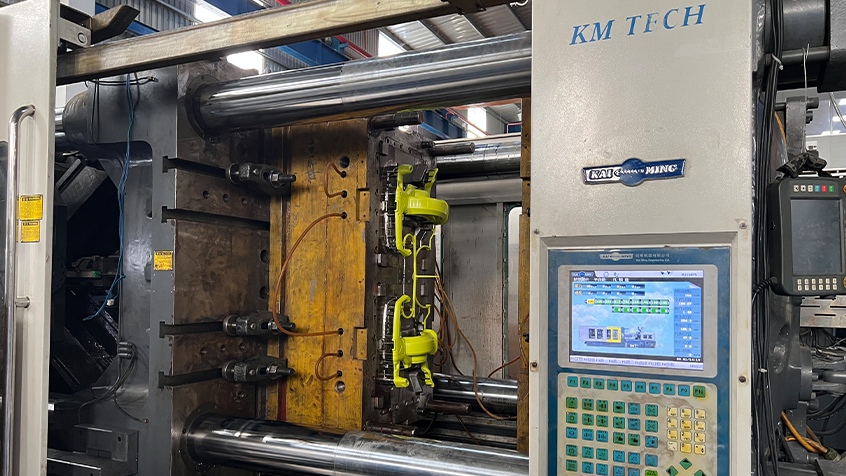Working Principle and Process of Injection Molding Machines
The working principle of the injection molding machine is similar to that of a syringe. Under the push of a screw, plastic is injected into a closed mold cavity where it cures and shapes the product. This process includes four main stages: filling, pressure holding, cooling, and demolding. Below is a detailed description of each stage in the injection molding process.
1. Filling
The first step is filling, where the plastic material is injected into the mold cavity. The speed of filling can be either high or low, affecting the molding efficiency. High-speed filling results in better weld mark strength, especially at higher temperatures, due to increased polymer chain activity and improved thermodynamic properties of the melt. Conversely, low-temperature filling leads to poor weld strength.
At Mingking, we utilize advanced injection molding machines that allow precise control over the filling process. Our equipment supports high-speed filling while maintaining optimal temperature, ensuring strong weld marks and high-quality products. Our expertise in material selection further enhances the filling stage, ensuring the best possible results for every project.
2. Pressure Holding
During the pressure holding stage, continuous pressure is applied to the melt to increase the density of the plastic and minimize shrinkage. In this stage, the plastic flow rate is low, and pressure factors dominate the process. High-pressure areas result in denser plastic, while low-pressure areas may lead to a looser structure. The plastic fills the mold cavity completely, and the mold tends to open under pressure. Therefore, selecting an injection molding machine with a high clamping force is crucial to ensure effective pressure maintenance.
Our injection molding machines are equipped with high clamping forces, ensuring effective pressure holding and minimal shrinkage. Mingking's robust quality control systems ensure that each product is dense and free of defects. Our attention to detail in this critical stage results in products that meet or exceed customer expectations.
3. Cooling
Cooling accounts for approximately 70%-80% of the entire molding cycle and directly affects the output of plastic products. Factors influencing cooling include the design of the plastic product, mold material, configuration of cooling water pipes, and the nature of the coolant. Ensuring uniform and rapid cooling requires proper design of the cooling system.
Mingking's state-of-the-art cooling systems are designed for efficiency and precision. We have invested in advanced cooling technology and carefully designed mold configurations to ensure uniform cooling, reducing cycle times, and enhancing production efficiency. Our expertise in mold design ensures that cooling is optimized for every product, leading to higher output and consistent quality.
4. Demoulding
The final stage is demoulding, where the product, now cold and solid, is removed from the mold. Incorrect demoulding methods can cause uneven stress and deformation of the product. Common demoulding methods include ejector rod demoulding and stripper plate demoulding, with the choice depending on the product's structural characteristics.
Our precision in demoulding techniques ensures that each product is handled with care, minimizing the risk of deformation or damage. Our experience with a wide range of demoulding methods allows us to choose the best technique for each product, ensuring that the final product maintains its integrity and meets the highest standards.

